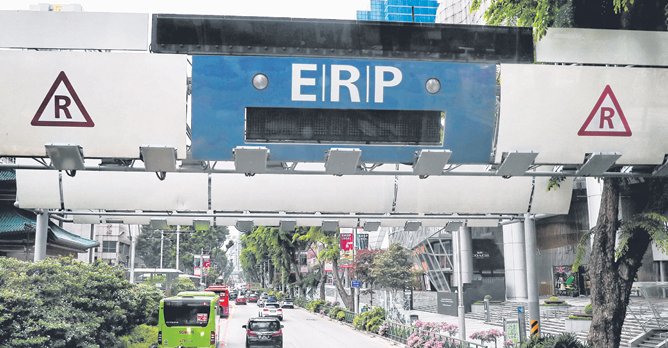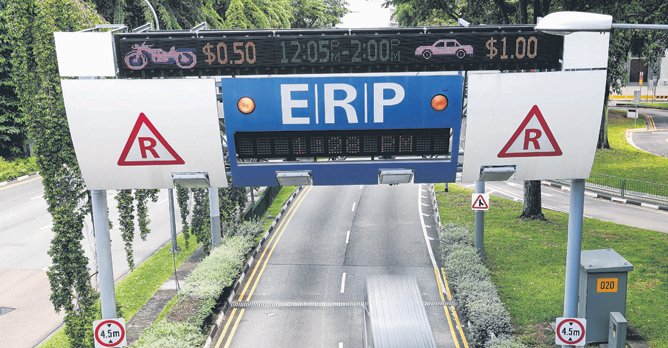New ERP system will keep congestion pricing model
11 Sep 2020|914 views
The way motorists are charged will not change when the satellite Electronic Road Pricing (ERP) system kicks in as the current model has been effective, said Transport Minister Ong Ye Kung.
In a Facebook post on 10 September 2020, Mr. Ong said it is much better to continue congestion pricing in a way that motorists are used to when Singapore switches to the new ERP system in 2023. "Distance-based charging is a significant policy change which has many implications and should be studied carefully," he said.

Calls for a distance-based system, where fees would vary depending on how far motorists drive, have drawn mixed reactions. Some think it is more equitable while others dread its implementation.
The new ERP system is capable of charging by distance, said Mr Ong, "but as a policy we are holding back". During the Budget earlier this year, Deputy Prime Minister Heng Swee Keat had said the technology for distance-based charging was "still several years away".
In his Facebook post, Mr. Ong addressed questions and grouses from motorists about the new On-Board Unit (OBU) that will be installed in vehicles for free from the second half of next year. The OBU comprises an antenna, a touchscreen display and a processing unit. It has drawn criticism for its perceived bulkiness.
Some asked why the three-piece unit could not be integrated into one, as with the OBUs issued to motorcyclists. Others asked if they could use their phones instead and do away with the standard-issue units altogether.

Mr. Ong noted that the Land Transport Authority (LTA) may use the OBUs to alert motorists about important traffic-related information when needed, a function that would be more difficult if motorists just used their phones.
Using smartphones to pay ERP remains a "possible future upgrade", he added. "But to start the new system, better to have a standard issue. If we use our own smartphones for ERP, there will be operational issues like battery running out, forgetting to bring smartphones, et cetera."
Data security was also a concern for LTA in its decision to kick-start the new ERP system with the OBUs instead of smartphones, he said. On concerns that the new OBUs could block the windscreen and affect driving, Mr Ong said the dimensions are only slightly bigger than the current in-vehicle units' - 152mm by 80mm, compared with 121mm by 78mm.

On comments about the lack of consultation on the OBU design, Mr. Ong said the LTA had some practical constraints, having called an international tender for the project. It had to choose the best system among the proposals received.
Thereafter, it was contractually bound. "There can be consultations and change of design but it will affect the contract," he said. "We will have to see how to do this better next time."
The way motorists are charged will not change when the satellite Electronic Road Pricing (ERP) system kicks in as the current model has been effective, said Transport Minister Ong Ye Kung.
In a Facebook post on 10 September 2020, Mr. Ong said it is much better to continue congestion pricing in a way that motorists are used to when Singapore switches to the new ERP system in 2023. "Distance-based charging is a significant policy change which has many implications and should be studied carefully," he said.

Calls for a distance-based system, where fees would vary depending on how far motorists drive, have drawn mixed reactions. Some think it is more equitable while others dread its implementation.
The new ERP system is capable of charging by distance, said Mr Ong, "but as a policy we are holding back". During the Budget earlier this year, Deputy Prime Minister Heng Swee Keat had said the technology for distance-based charging was "still several years away".
In his Facebook post, Mr. Ong addressed questions and grouses from motorists about the new On-Board Unit (OBU) that will be installed in vehicles for free from the second half of next year. The OBU comprises an antenna, a touchscreen display and a processing unit. It has drawn criticism for its perceived bulkiness.
Some asked why the three-piece unit could not be integrated into one, as with the OBUs issued to motorcyclists. Others asked if they could use their phones instead and do away with the standard-issue units altogether.

Mr. Ong noted that the Land Transport Authority (LTA) may use the OBUs to alert motorists about important traffic-related information when needed, a function that would be more difficult if motorists just used their phones.
Using smartphones to pay ERP remains a "possible future upgrade", he added. "But to start the new system, better to have a standard issue. If we use our own smartphones for ERP, there will be operational issues like battery running out, forgetting to bring smartphones, et cetera."
Data security was also a concern for LTA in its decision to kick-start the new ERP system with the OBUs instead of smartphones, he said. On concerns that the new OBUs could block the windscreen and affect driving, Mr Ong said the dimensions are only slightly bigger than the current in-vehicle units' - 152mm by 80mm, compared with 121mm by 78mm.

On comments about the lack of consultation on the OBU design, Mr. Ong said the LTA had some practical constraints, having called an international tender for the project. It had to choose the best system among the proposals received.
Thereafter, it was contractually bound. "There can be consultations and change of design but it will affect the contract," he said. "We will have to see how to do this better next time."
Latest COE Prices
October 2025 | 2nd BIDDING
NEXT TENDER: 05 Nov 2025
CAT A$122,000
CAT B$131,889
CAT C$76,801
CAT E$136,000
View Full Results Thank You For Your Subscription.




















